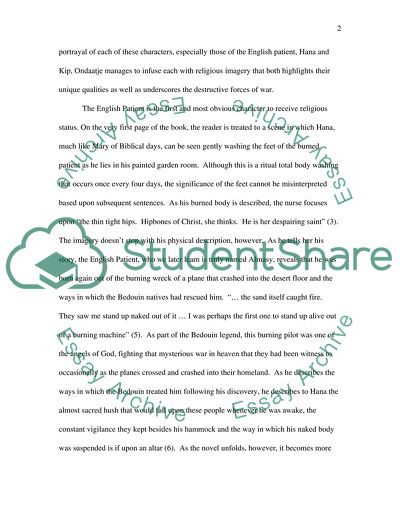Cite this document
(“The English Patient by Michael Ondaatje Essay Example | Topics and Well Written Essays - 2000 words”, n.d.)
The English Patient by Michael Ondaatje Essay Example | Topics and Well Written Essays - 2000 words. Retrieved from https://studentshare.org/literature/1537943-the-english-patient-by-michael-ondaatje
The English Patient by Michael Ondaatje Essay Example | Topics and Well Written Essays - 2000 words. Retrieved from https://studentshare.org/literature/1537943-the-english-patient-by-michael-ondaatje
(The English Patient by Michael Ondaatje Essay Example | Topics and Well Written Essays - 2000 Words)
The English Patient by Michael Ondaatje Essay Example | Topics and Well Written Essays - 2000 Words. https://studentshare.org/literature/1537943-the-english-patient-by-michael-ondaatje.
The English Patient by Michael Ondaatje Essay Example | Topics and Well Written Essays - 2000 Words. https://studentshare.org/literature/1537943-the-english-patient-by-michael-ondaatje.
“The English Patient by Michael Ondaatje Essay Example | Topics and Well Written Essays - 2000 Words”, n.d. https://studentshare.org/literature/1537943-the-english-patient-by-michael-ondaatje.


